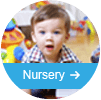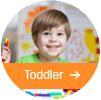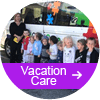How to Prevent Scalds at Home
Scalds are one of the commonest serious accidents children suffer in the home. Here are some thoughts as to how to prevent scalds at home.
Danger areas in the home for scalds
These should be obvious to us all but statistically; the main danger spots are:
- bathrooms;
- kitchens;
- dining rooms (or kitchen eating areas).
Scalding in the bathroom
This is surprisingly common. The maximum safe temperature for a child’s bath is around 37C but with distractions, it can be terrifyingly easy to lose track of what water has been put in and what hasn’t.
Some good tips to prevent scalds include:
- set the water temperature in bathroom taps to 50C or lower if your system permits such (you’ll still need to mix with cold at that temperature though);
- always run the cold tap first and add hot to make it comfortable. Also, make sure your cold tap runs for a few seconds after the hot has been closed, as that will cool off the spout;
- fit child-proof fittings to hot taps and never leave a child unattended in the bathroom;
- be sure that you always test the temperature of bath water before putting your child in. The ancient ‘elbow test’ can work well but if you don’t trust your judgement, modern bath thermometers are cheap and effective.
The kitchen
The kitchen can be particularly dangerous because it frequently has containers of boiling liquids on surfaces or being carried around.
Young children and kitchens don’t mix and it may be best to try and keep your child out until such time as they’re able to be more aware of dangerous things not to touch.
Of course, that isn’t always possible or practical so:
- your cooker and the work surfaces immediately adjacent are potentially deadly for a child. If you can, put a child-proof barrier around it;
- turn all pot handles to the rear and if possible, only use the back burners;
- if it’s free-standing, secure your stove to the wall;
- bring plates to the oven for service to avoid carrying pots full of scalding liquids across kitchen areas;
- when you’re cooking, don’t allow your children to play in the kitchen at all or, if they must, make certain they’re not on the floor and under your feet;
- remember to apply the same caution with a microwave as you would a stove.
Eating areas
The principal risk here is hot food and drink.
You should:
- make sure your child is seated at the table before you start to serve. If they’re very young, secure them into their chair;
- test the temperature of the food, particularly when they’re still at the ‘messy eater’ age;
- use child-safe cutlery and crockery if they’re young. That can be harder to spill or pull over (though not impossible);
- only allow them to eat when you’re present;
- try not to bring very hot liquids (coffee, soup etc.) to the table. Children can suddenly pull at a tablecloth or lunge about in play.
The importance of education
For all the safety gadgets and related considerations, ultimately the child’s best protection is to understand the dangers of hot liquids. You should educate them on that at the earliest age you believe they’d be capable of understanding.













